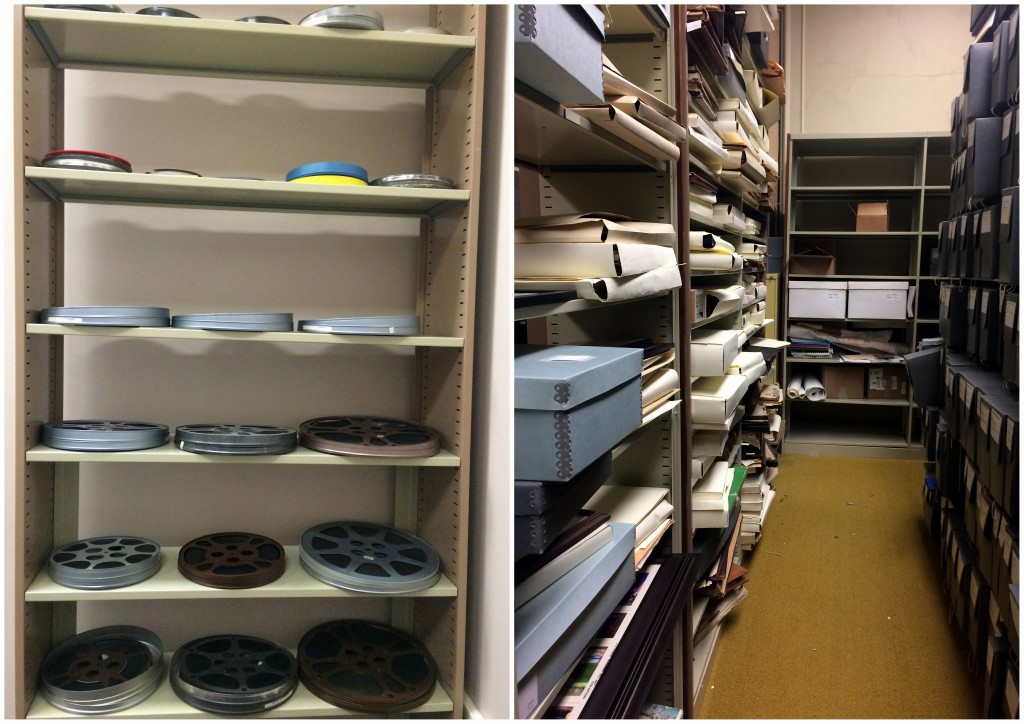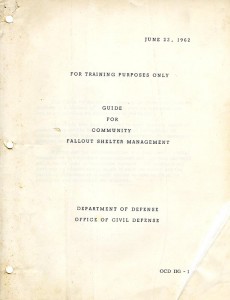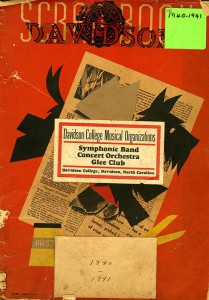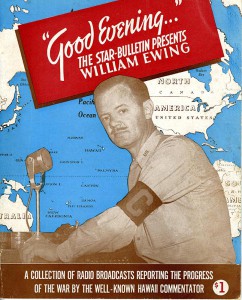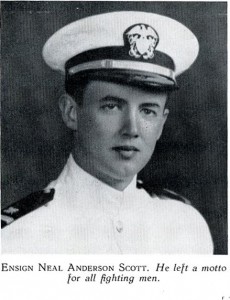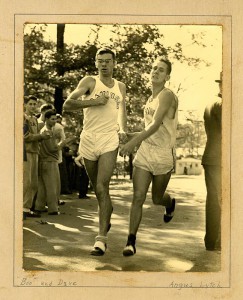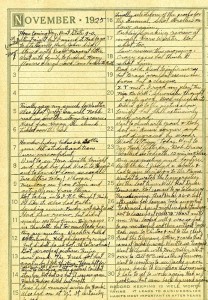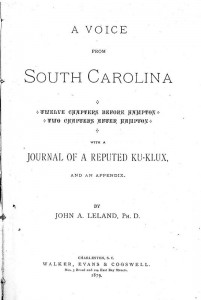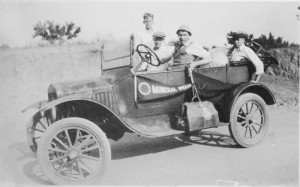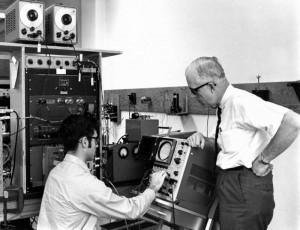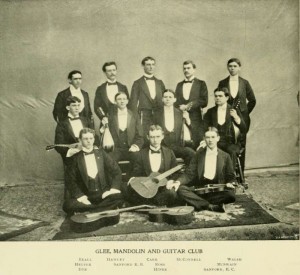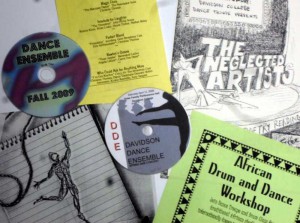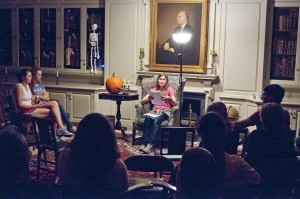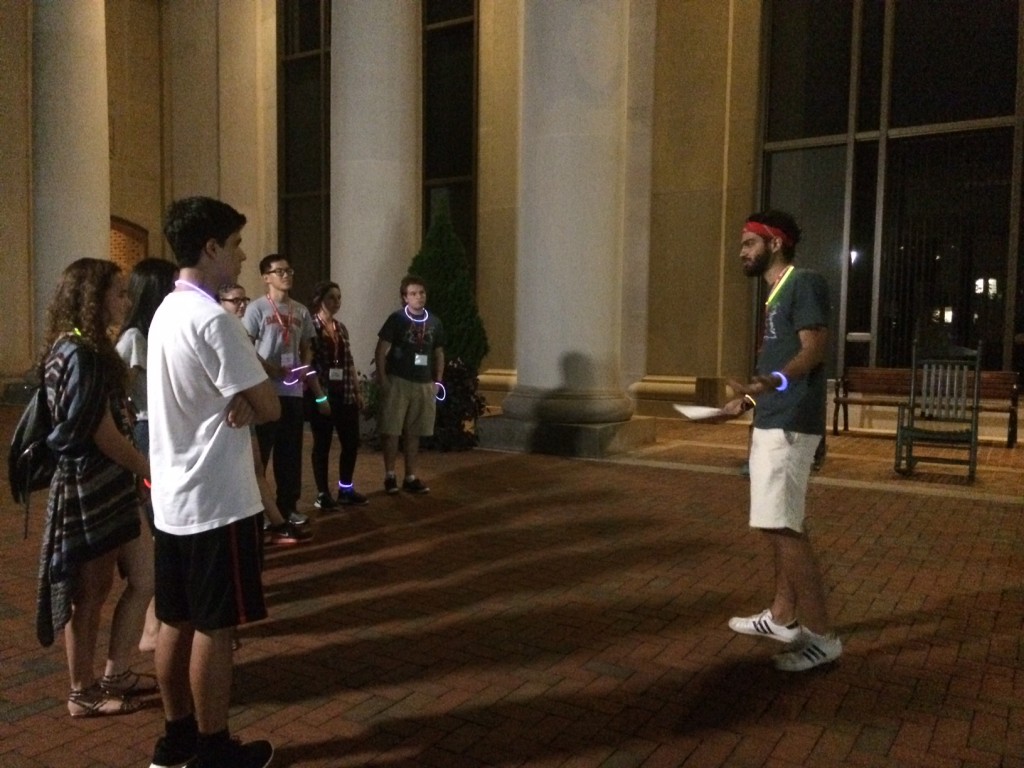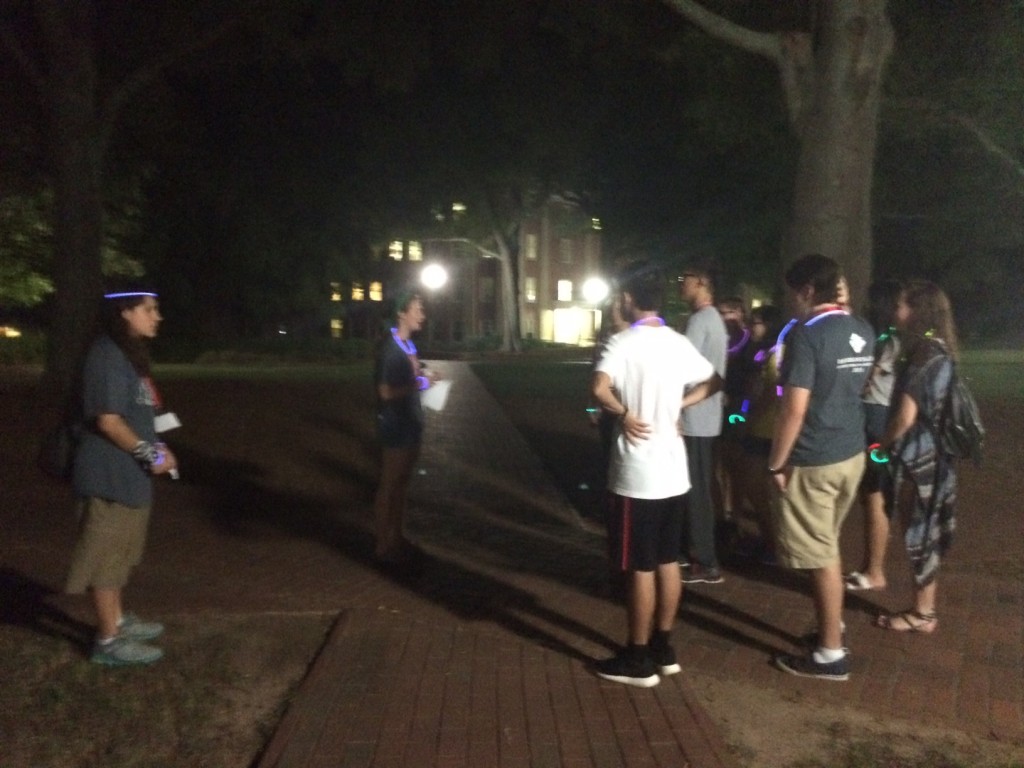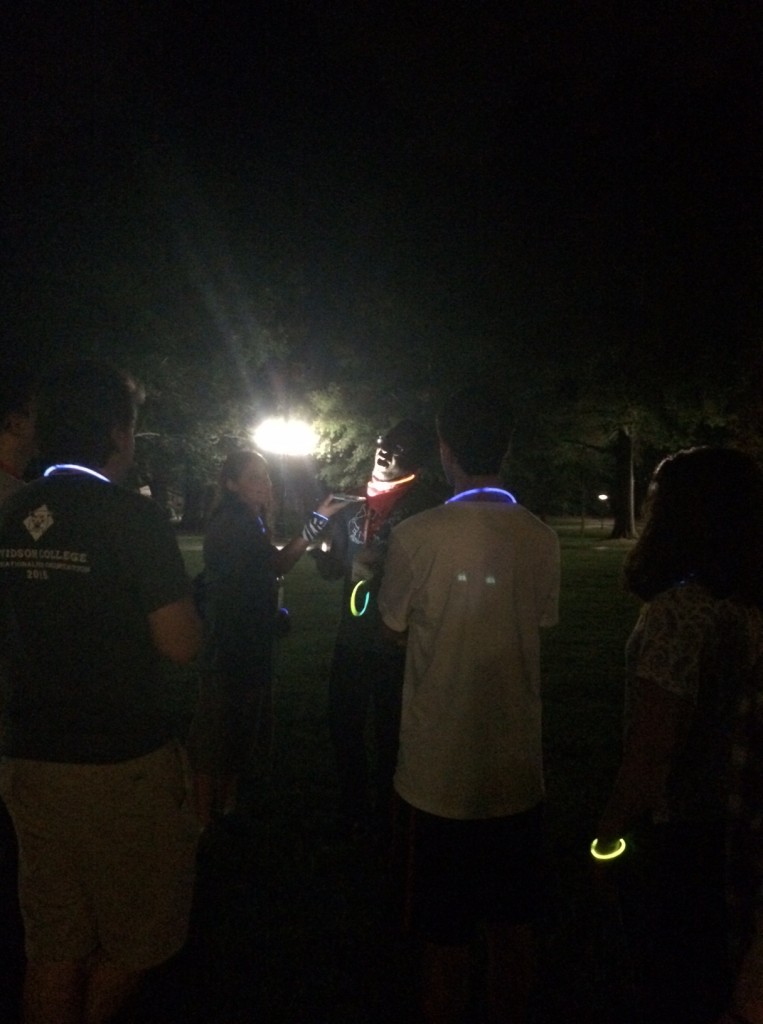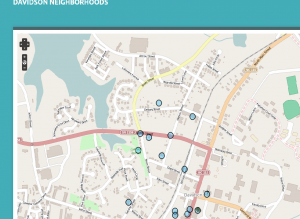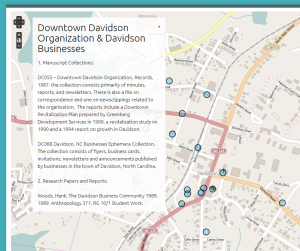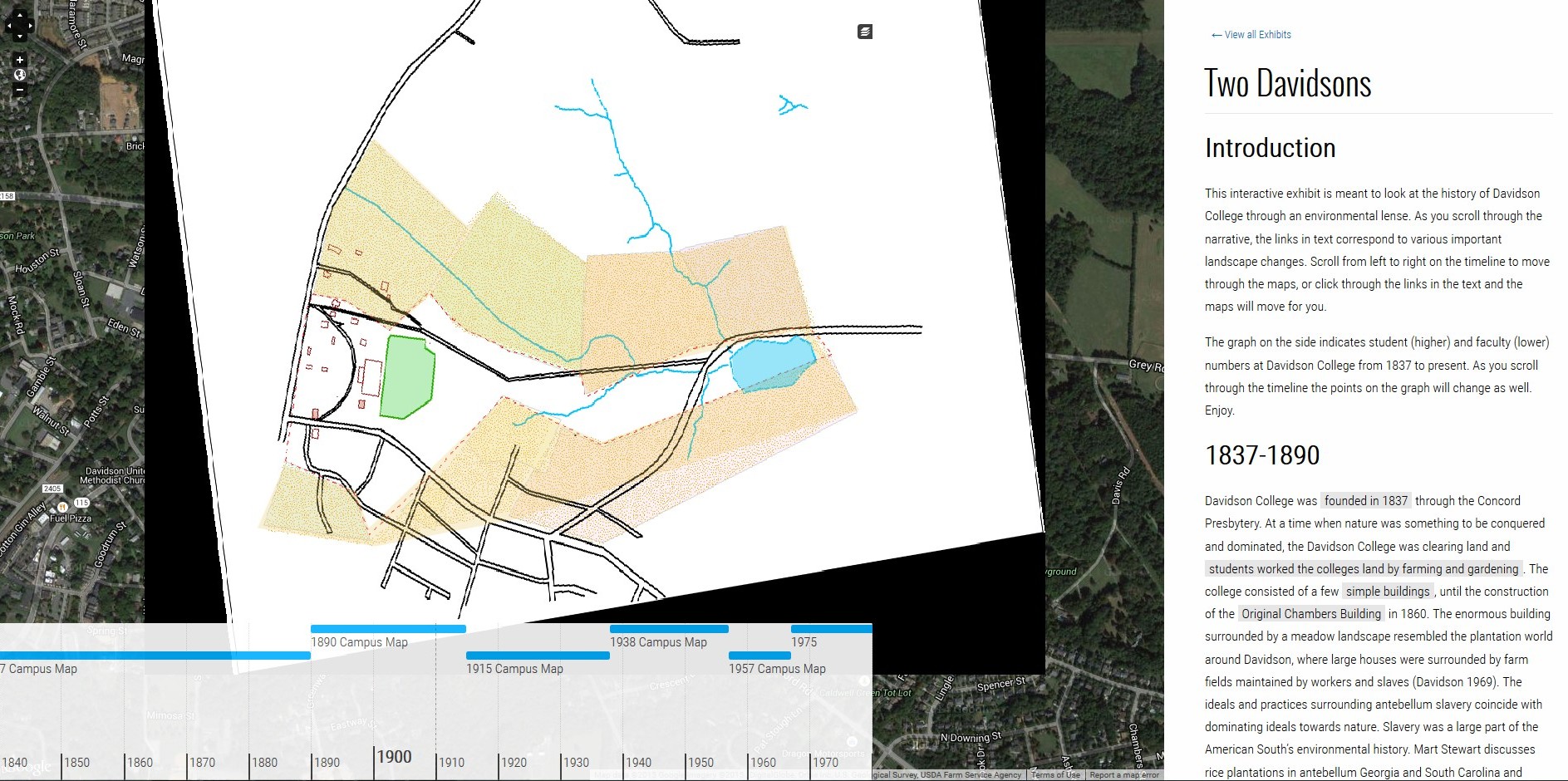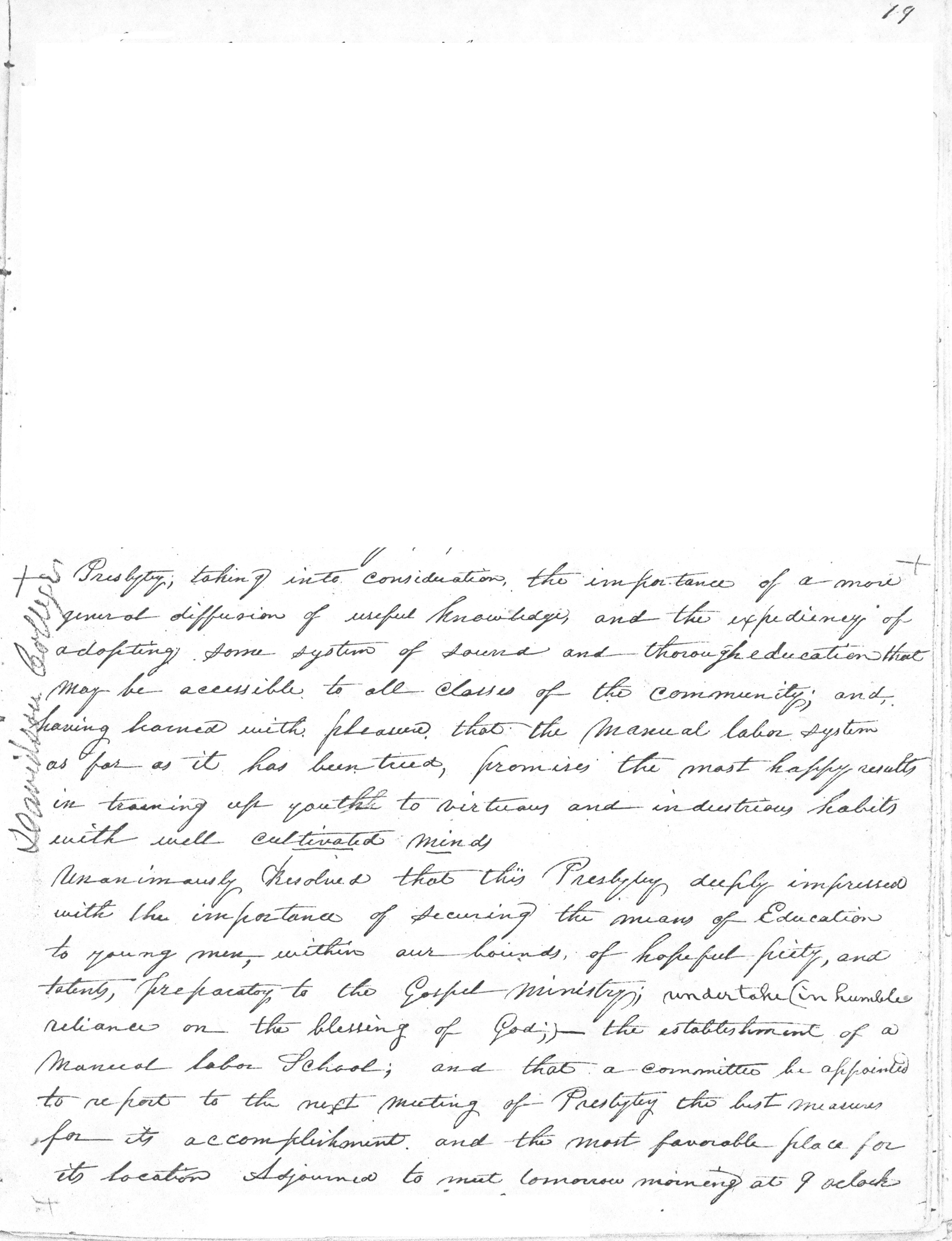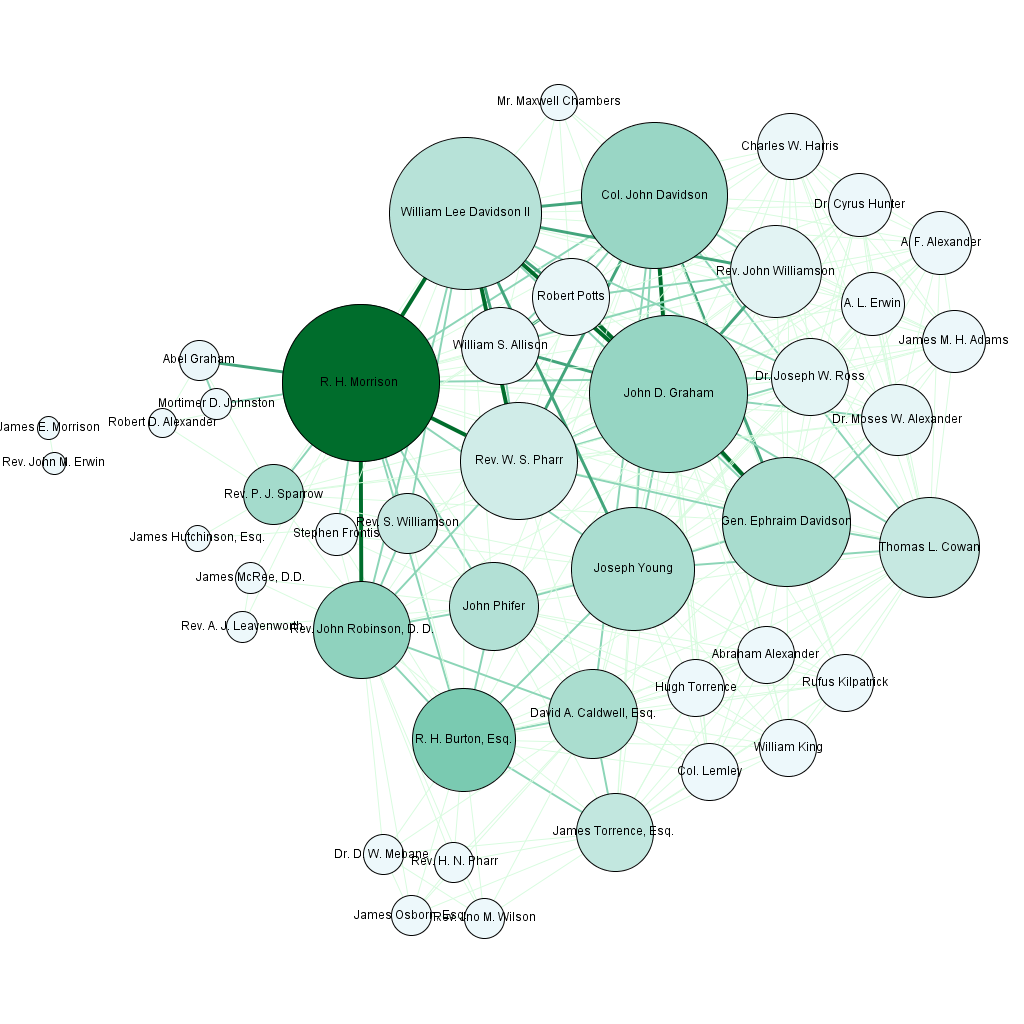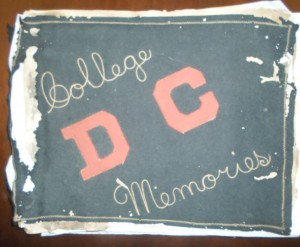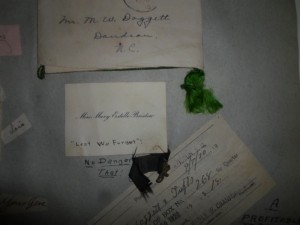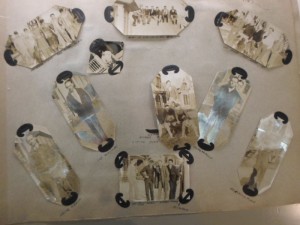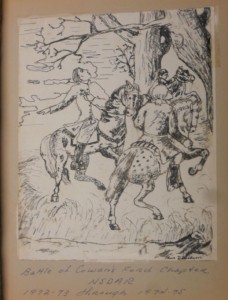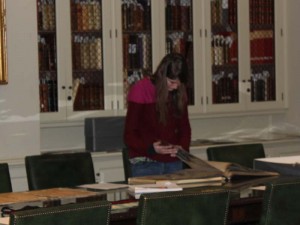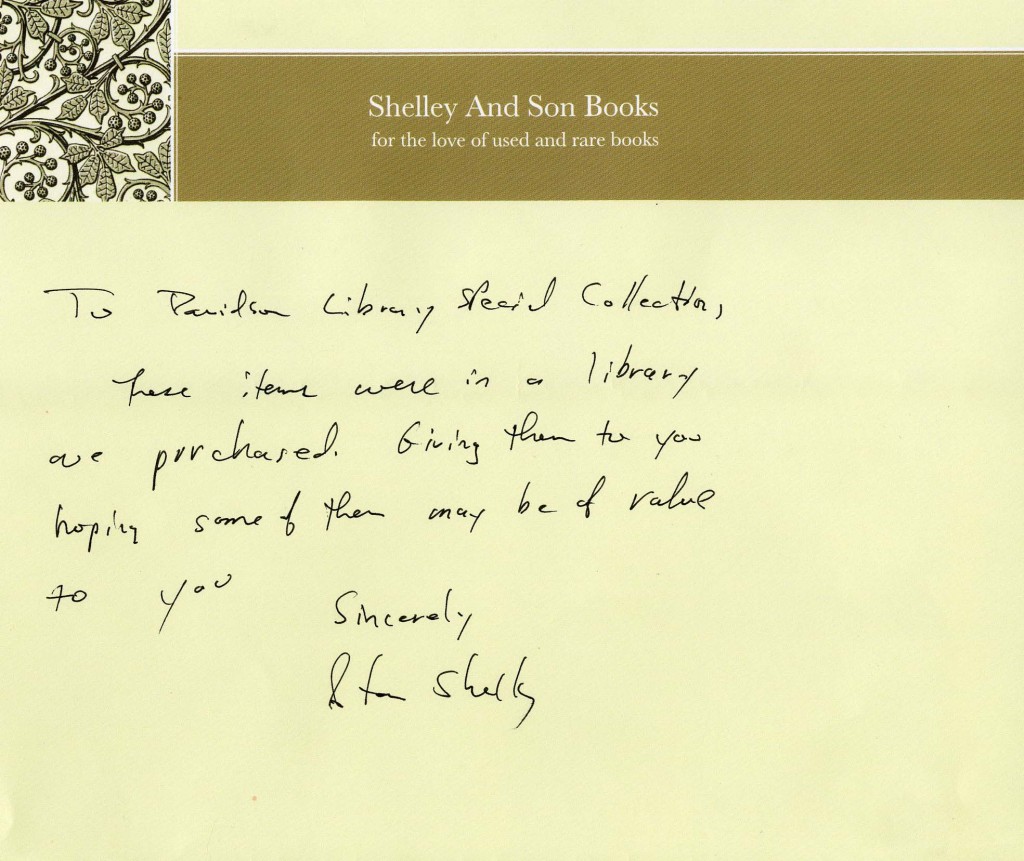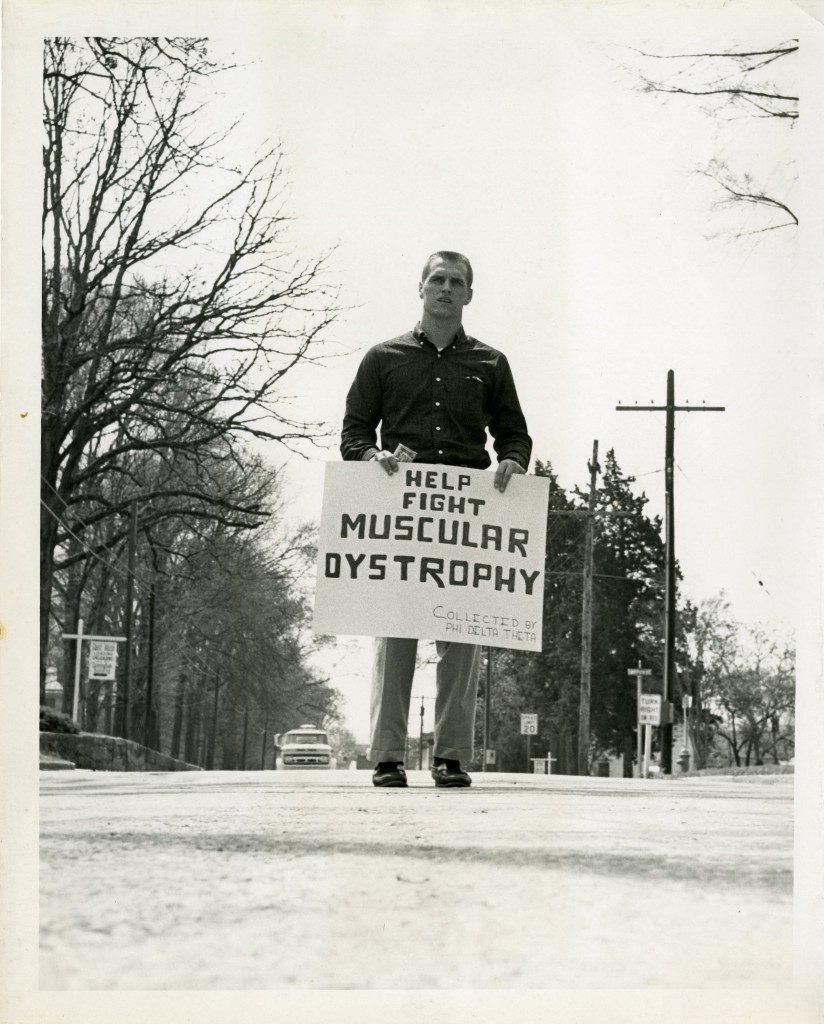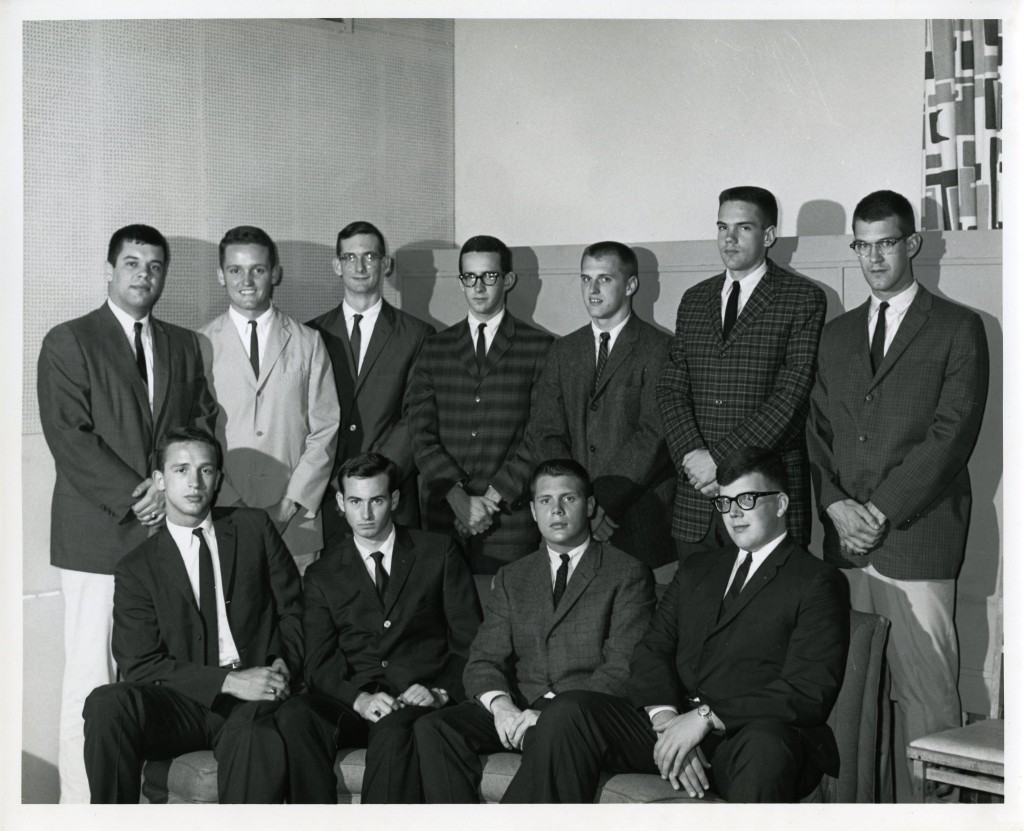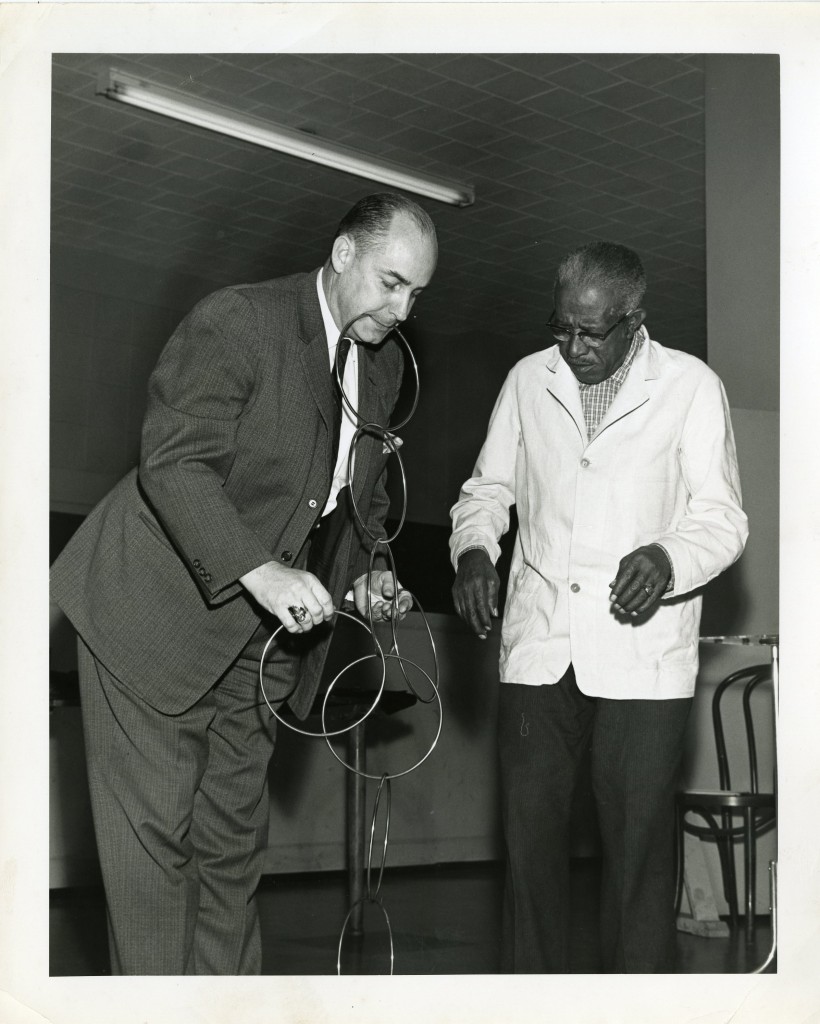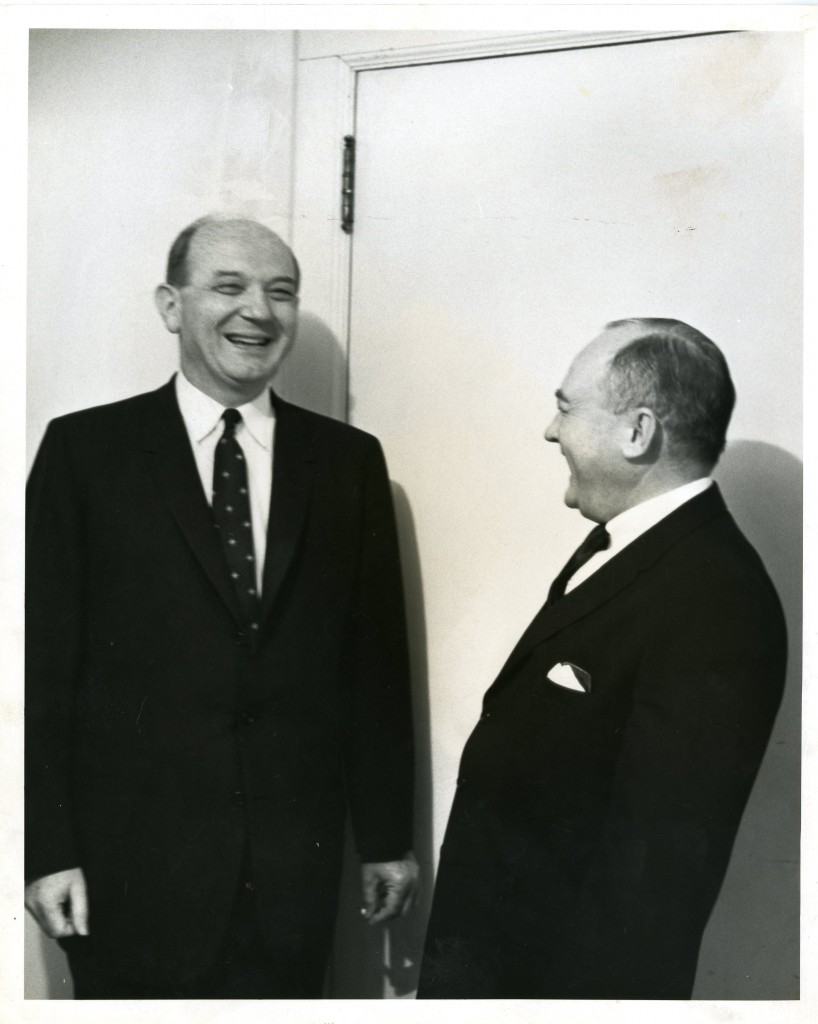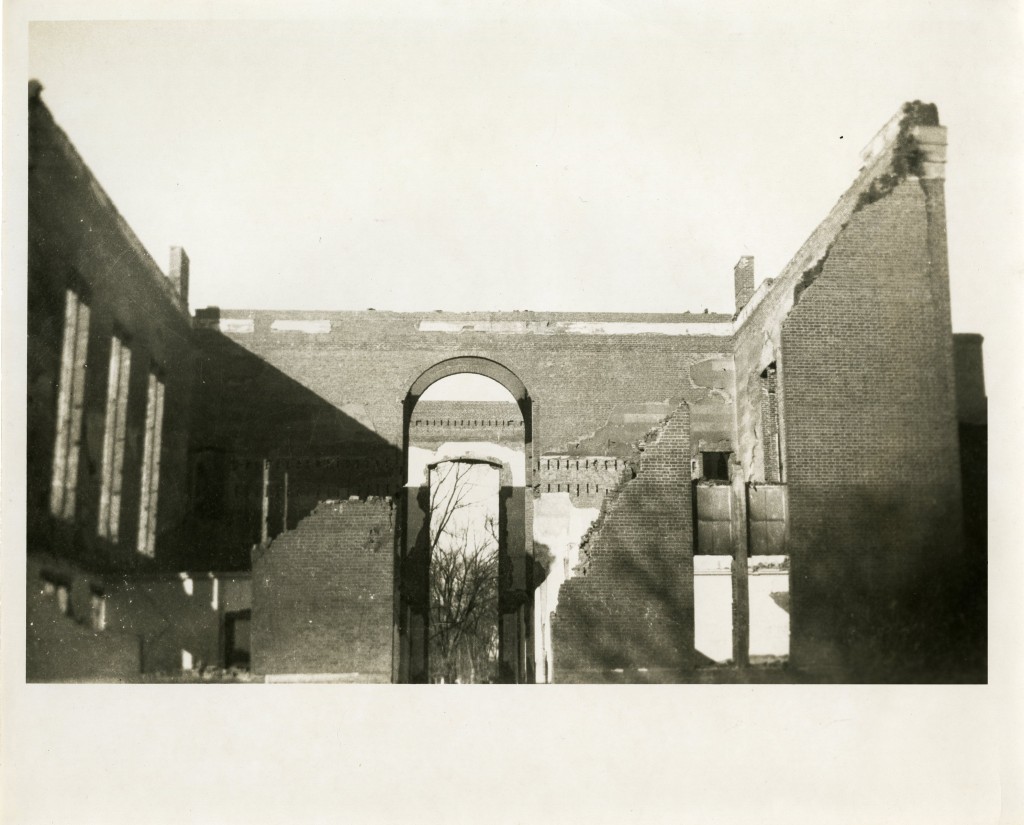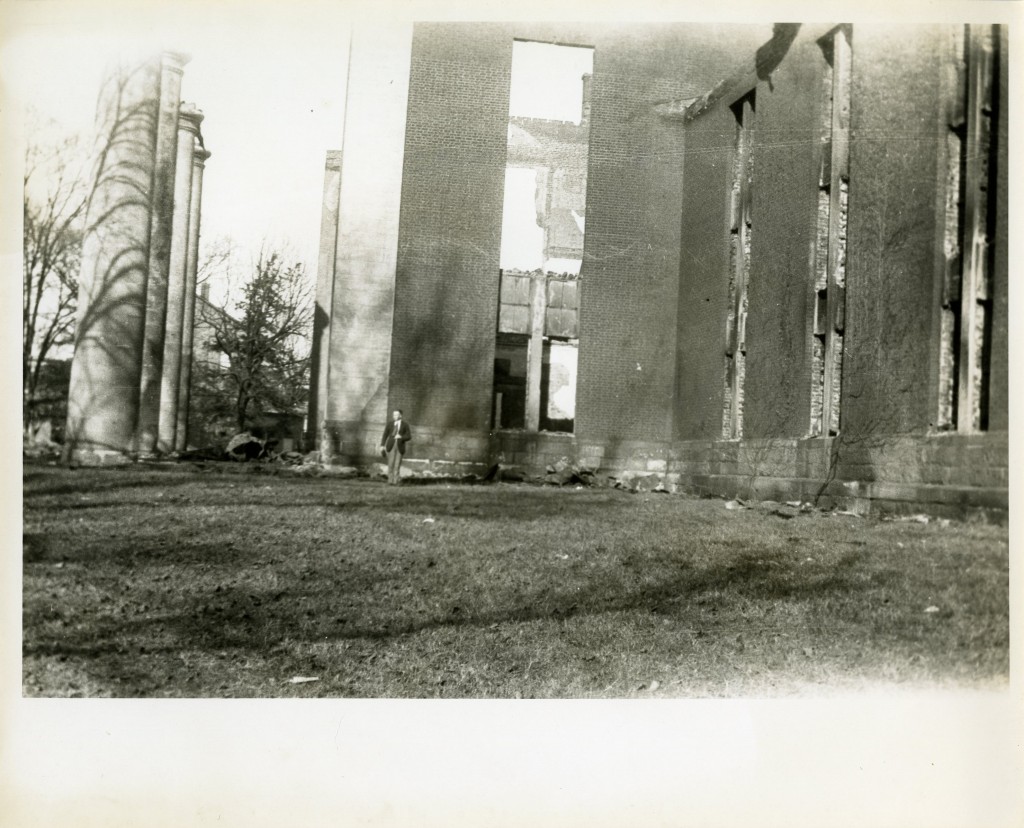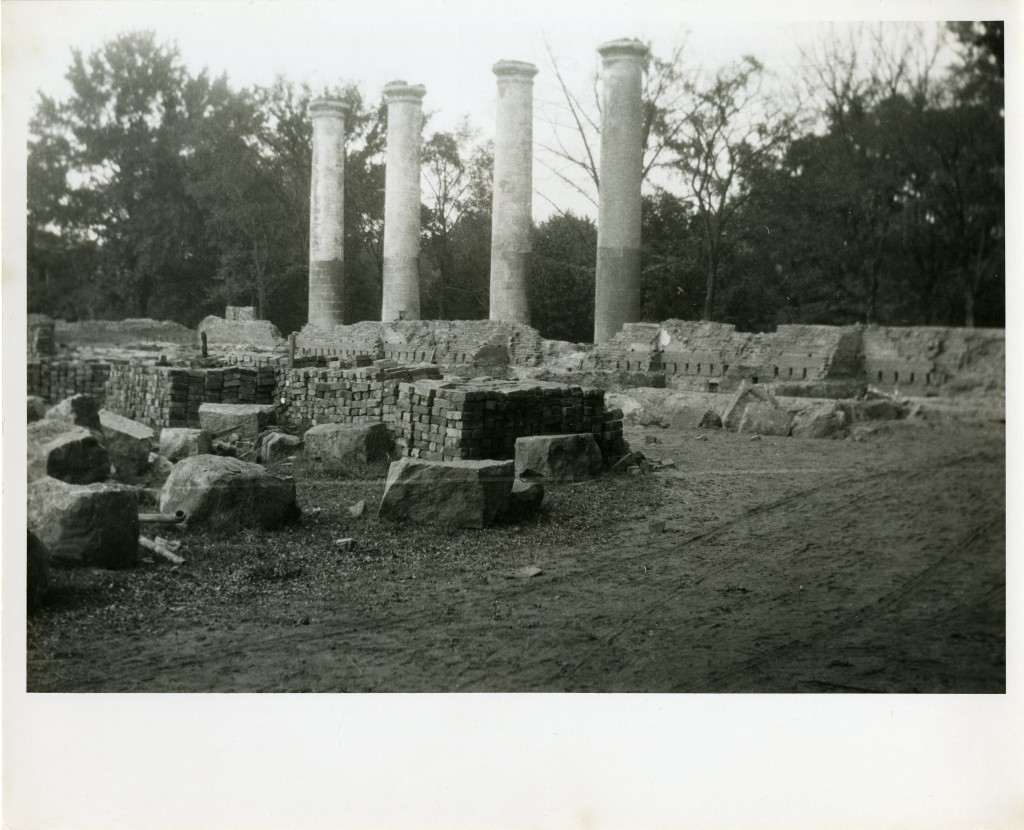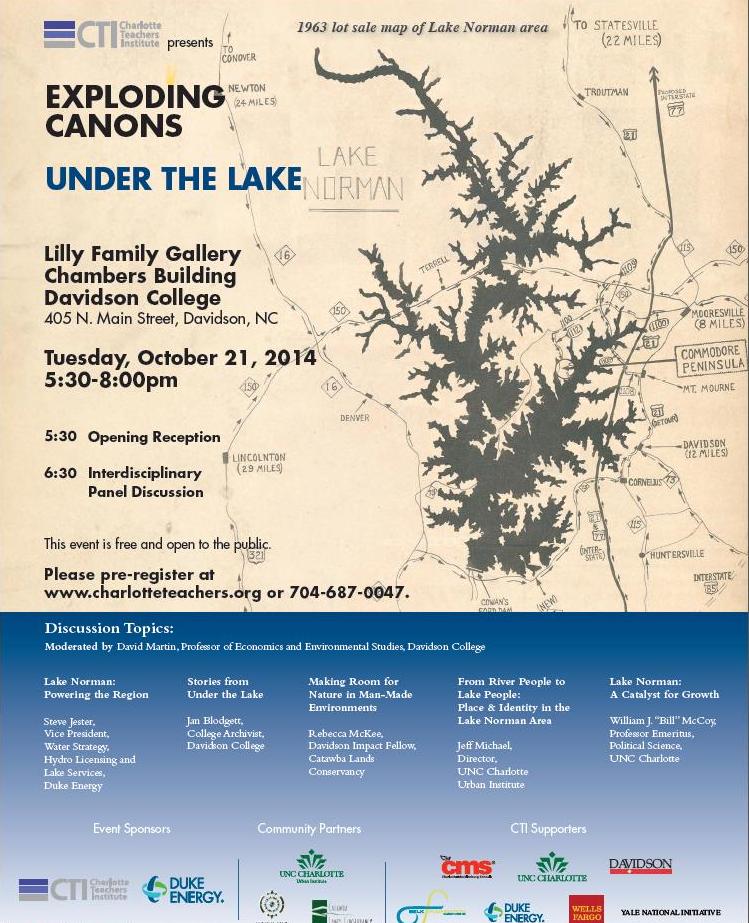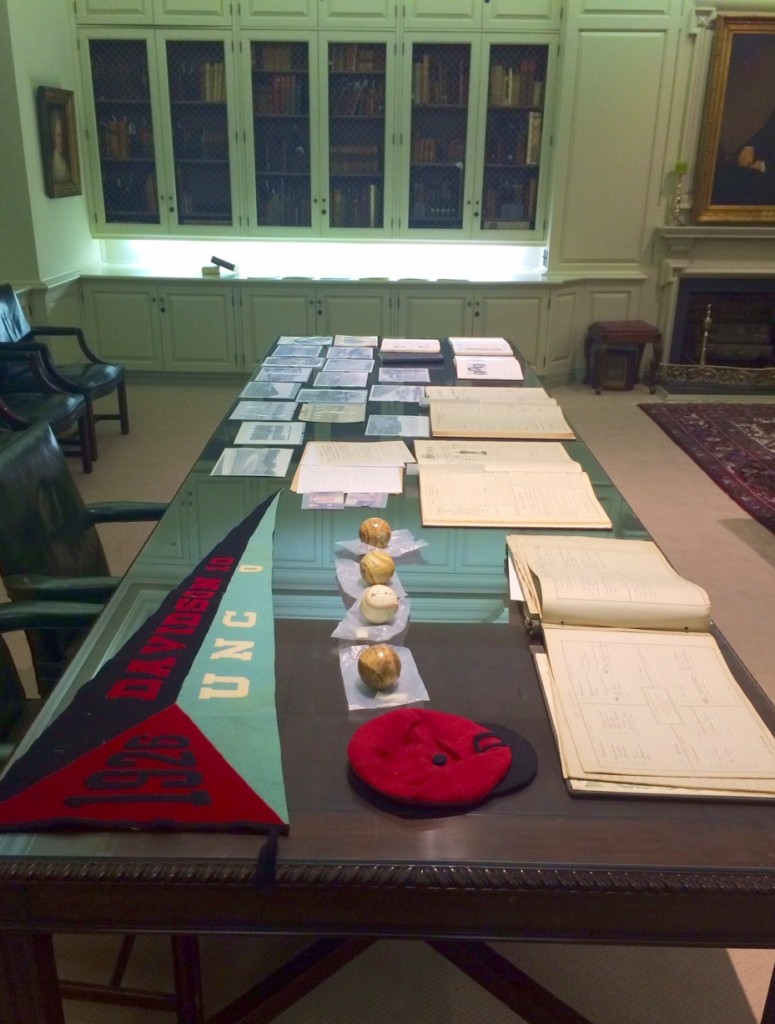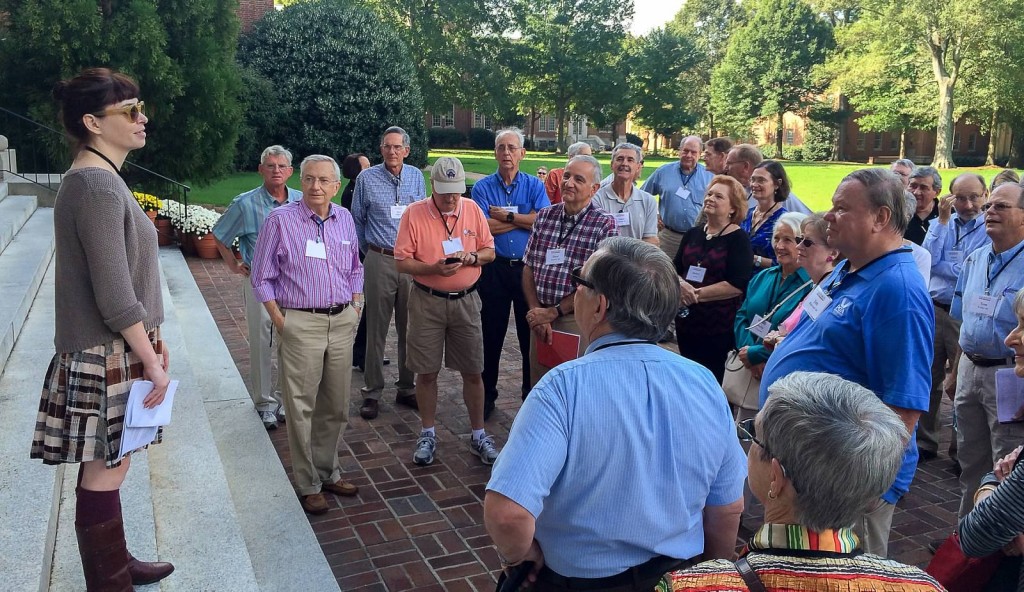Student publications are invaluable to the Archives & Special Collections here at Davidson College – we use the annual Quips and Cranks and weekly newspaper The Davidsonian countless times per semester in instruction and to answer reference questions. In addition to verifying facts, these student-produced publications provide insight into student culture at the time they were written. Recently, while answering a reference question, I stumbled across a reference to a short-lived student humor magazine called Sanity Rare.
Sanity Rare was published by the Junior Class as part of the Junior Speaking program in 1925, 1926, and 1927. By the 1920s Junior Speaking, which had grown out of commencement exercises for the Junior and Senior classes, separated from the Senior exercises and turned unto a social weekend featuring variety shows. Later, Junior Speaking would morph into a dance weekend and then Spring Frolics, still celebrated today. Sanity Rare, published in conjunction with Junior Speaking, was filled with jokes, cartoons, short poems, and advertisements for local businesses. The 1927 Quips and Cranks featured a page on Sanity Rare, describing the magazine as “a safety valve for the humorists and cartoonists on the campus.”
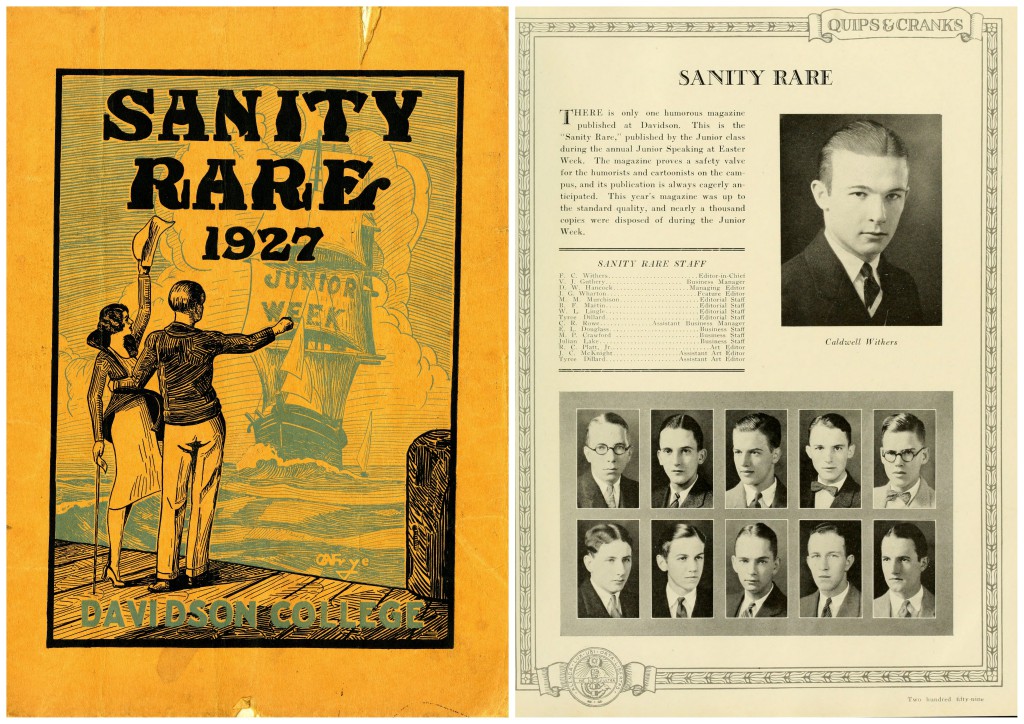
Cover of the 1927 issue of Sanity Rare, and the student activity page describing the magazine and listing its staff in the 1927 Quips and Cranks.
Like the longer-running humor magazines The Yowl (1930 – 1936, revived as a column in The Davidsonian in 2004) and Scripts ‘N Pranks (1936 – 1965), Sanity Rare poked fun at Davidson students (particularly freshmen), faculty, and traditions and as well as social issues of the time.
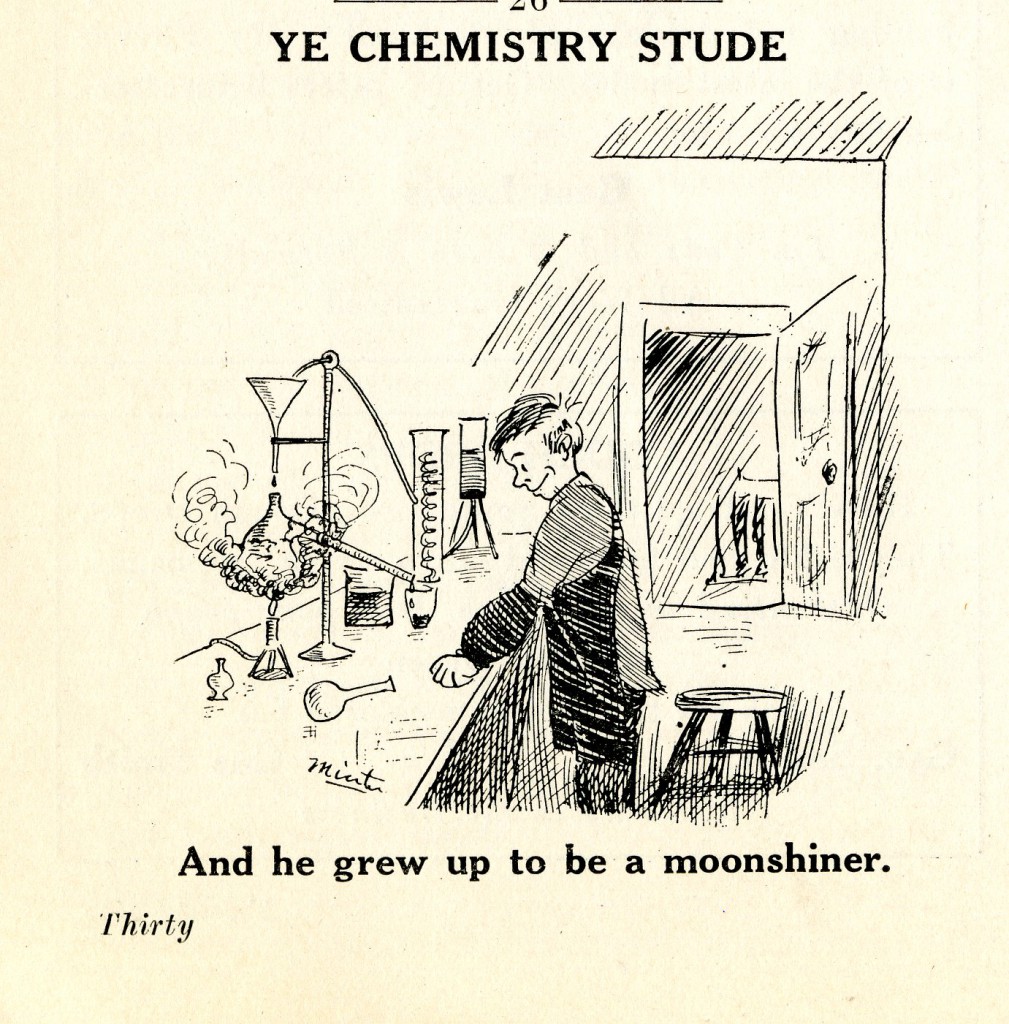
This cartoon from the 1925 Sanity Rare pokes fun at a practical life application of chemistry studies – making moonshine during prohibition.
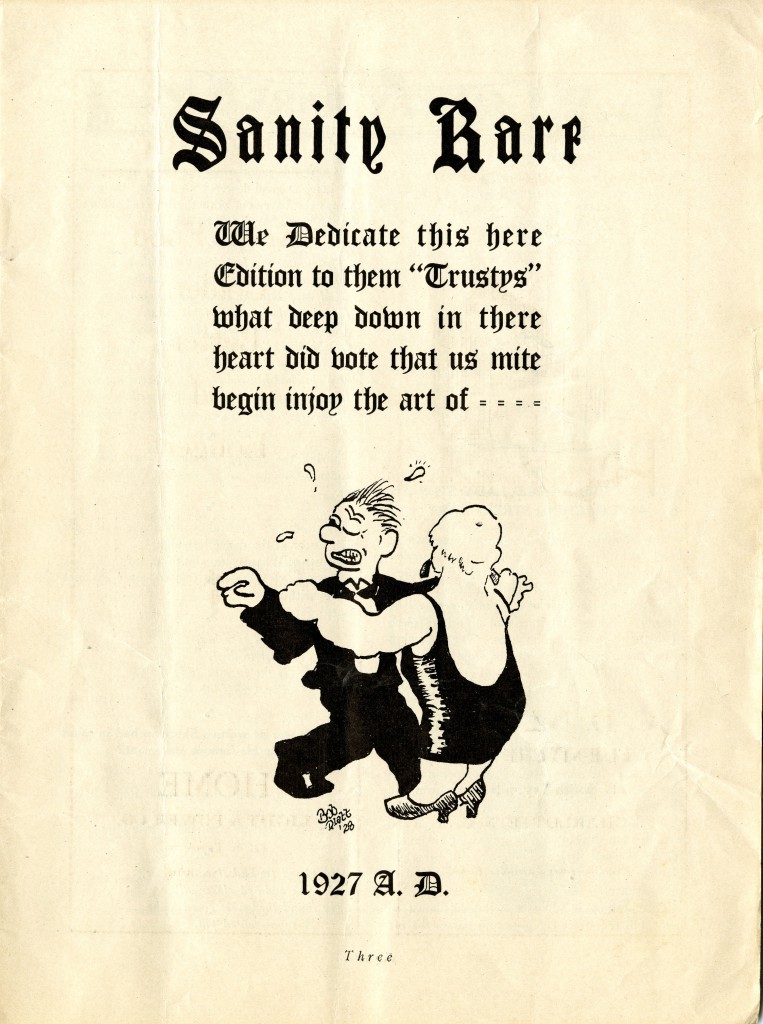
Dances were not permitted on campus until the 1940s, as this is page in the 1927 Sanity Rare lampoons.

This joke from the 1927 Sanity Rare ribs both fraternities and Davidson’s boarding house tradition.
Many of the jokes in the magazine surrounded dating and Sanity Rare‘s editorial page always listed several women under the category “Inspirational and Otherwise,” perhaps commenting on the fact that many students invited dates to Junior Speaking weekend. The 1926 editorial page, for instance, opens with this address to its readers: “SANITY RARE extends to the many young ladies, who have honored us with their presence on this joyous occasion, a most sincere welcome. During the long winter months as we sat in our rooms, thinking fondly of the days of Junior Speaking, the thought of your presence among us was an inspiration.”
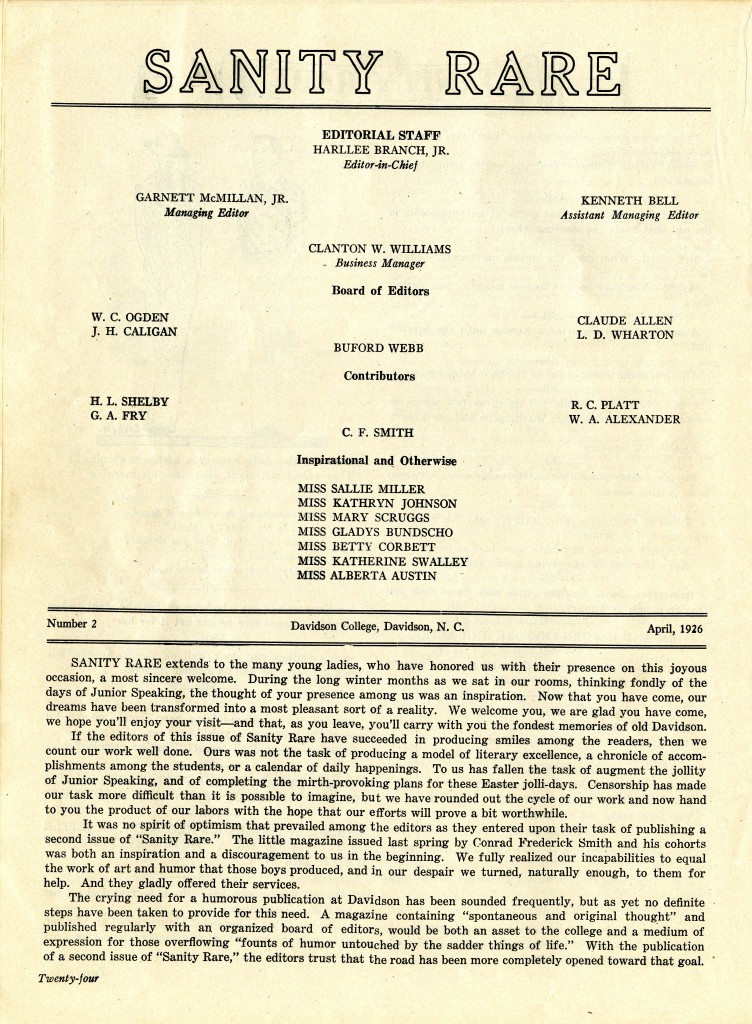
Editorial page of the 1926 issue of Sanity Rare, which also calls for the establishment of a regular humor magazine on campus – a void that The Yowl and then Scripts ‘N Pranks would later fill.
While Sanity Rare and other college humor magazines provide a valuable glimpse into student life from an earlier period, they also often illustrate intolerance – much of the material in Sanity Rare struck me as racist, sexist, and in poor taste. When our run of Scripts ‘N Pranks was digitized by a student during summer 2014 (Ellyson Glance ’16; see her post on her archives summer work here), she also commented on how many of the jokes in the pages of that mid-century humor magazine offended her.
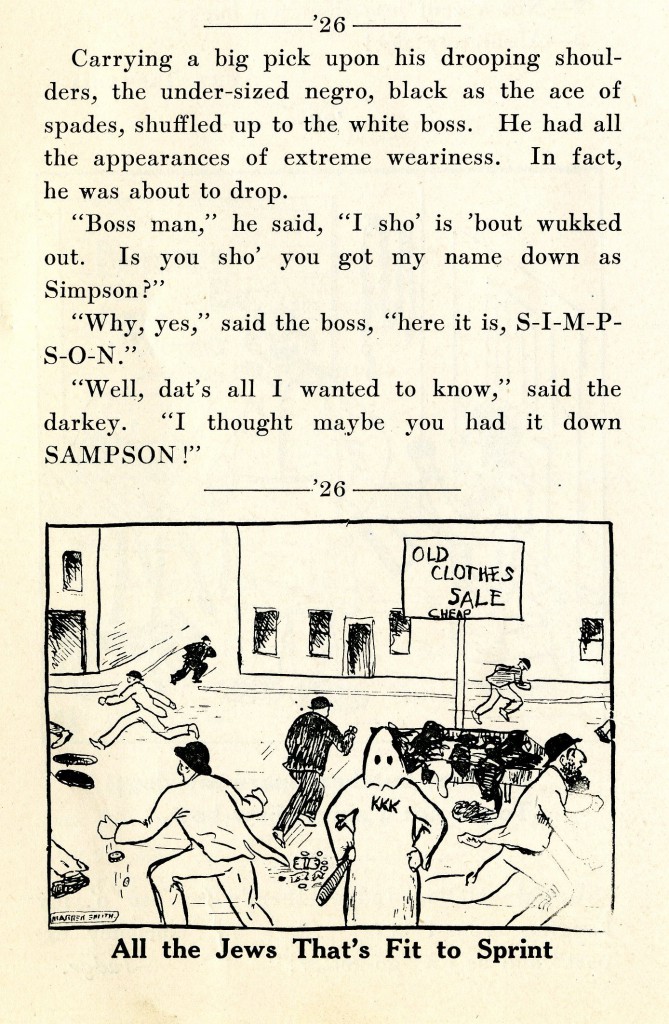
This section from the 1925 issue is an example of the racist and antisemitic jokes that frequently appear in the pages of Sanity Rare.
While jokes mocking the African-American population or giving dating “advice” that suggests date rape certainly does not make for enjoyable reading, these humor magazines are still providing a portrait of student life – in Sanity Rare‘s case, what some Davidson students found funny in the mid-1920s. Preserving material that provides negative views or makes researchers (and archivists!) uncomfortable is important – knowing what past generations of students considered acceptable within the bounds of humor lets today’s researchers gain insight into the specific culture of Davidson College, but also wider student culture and American culture.
As College President Carol Quillen commented in the recent Huffington Post article, “What Three College Presidents Learned from Campus Racism Protests,” “When students are looking to the institution… some of what they’re doing is saying, ‘Do your job’… your job is to give [them] what [they] need to go from this experience of marginalization and pain to a political position. That’s what education does, and insofar as we’re not doing that for them, we need to do better.” In this archivist’s opinion, part of doing my job better is aiding students and other researchers in understanding the history of Davidson College – even when that history reflects badly on our community.




